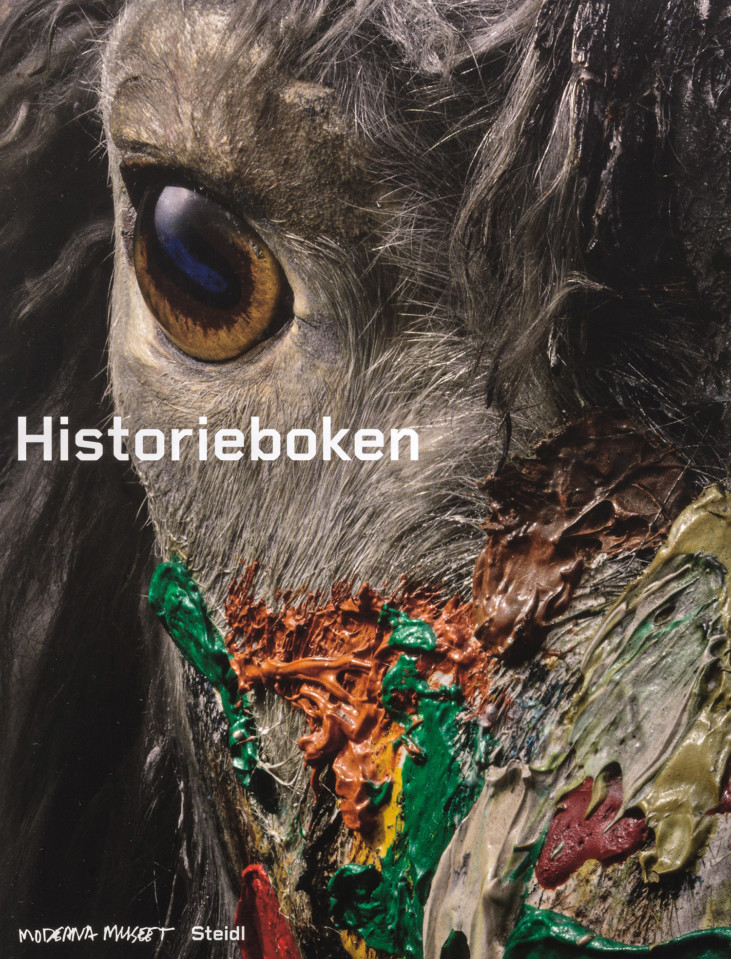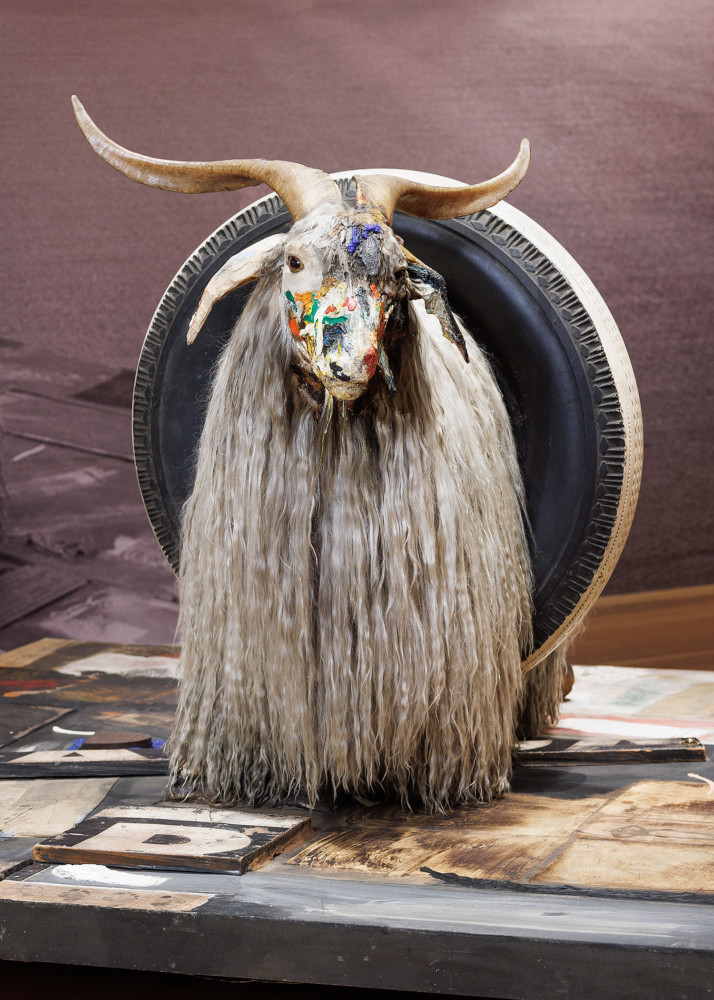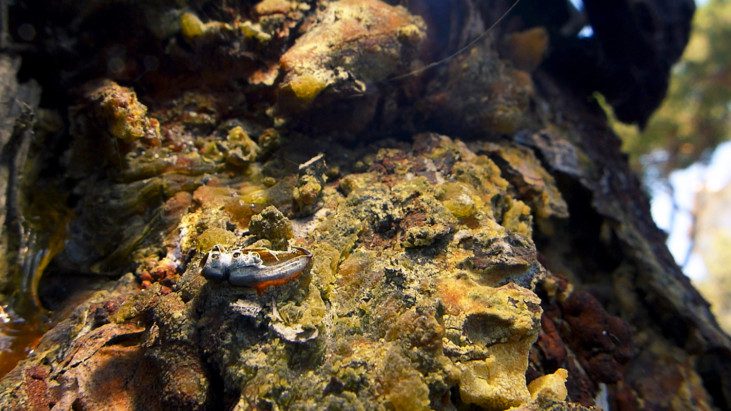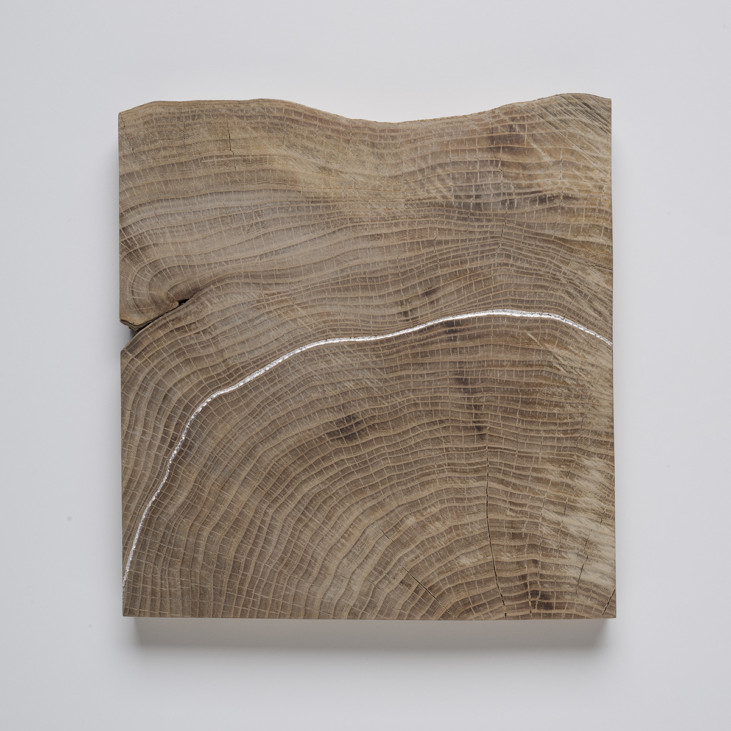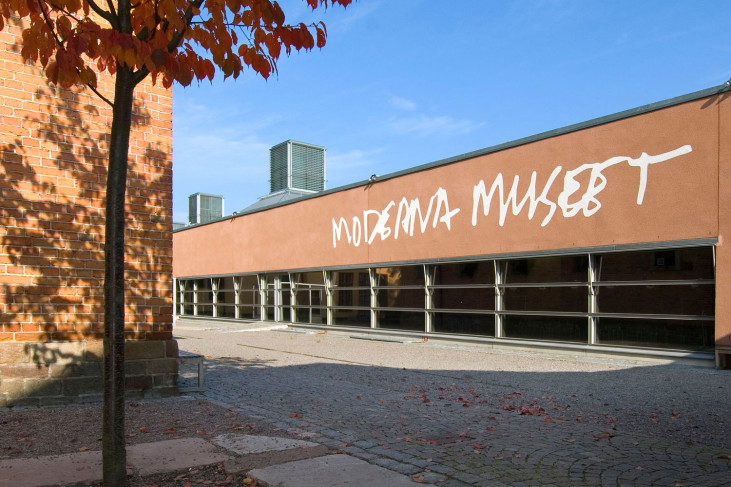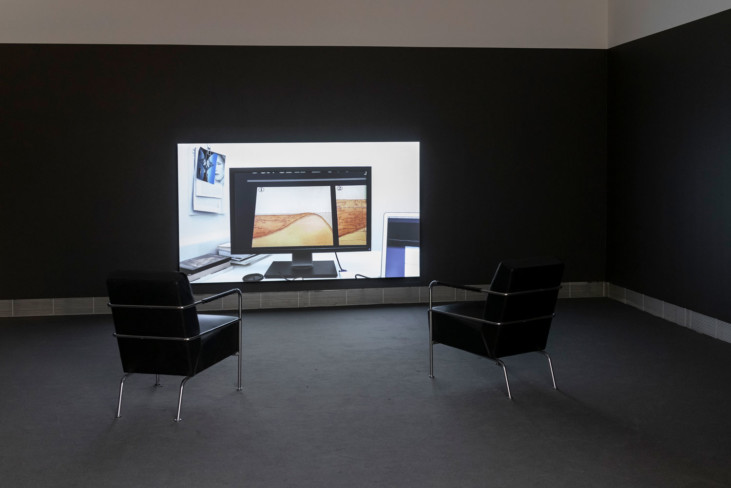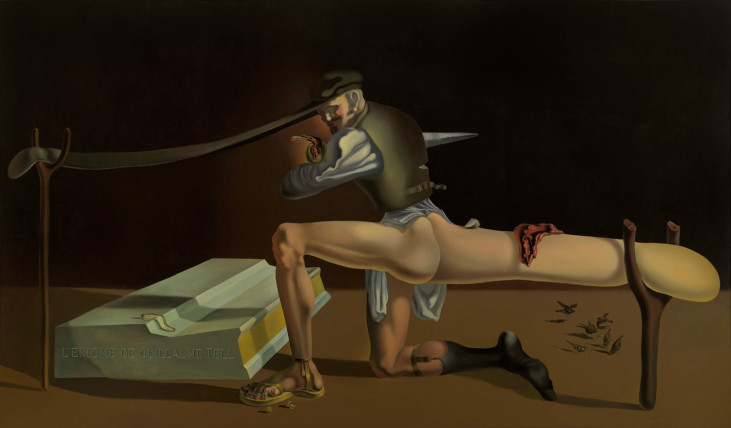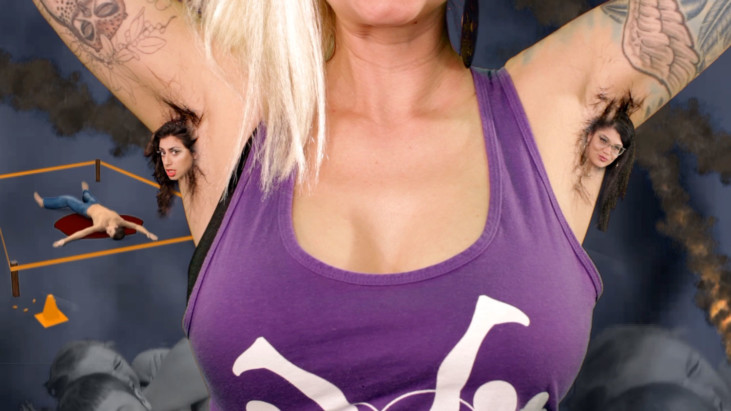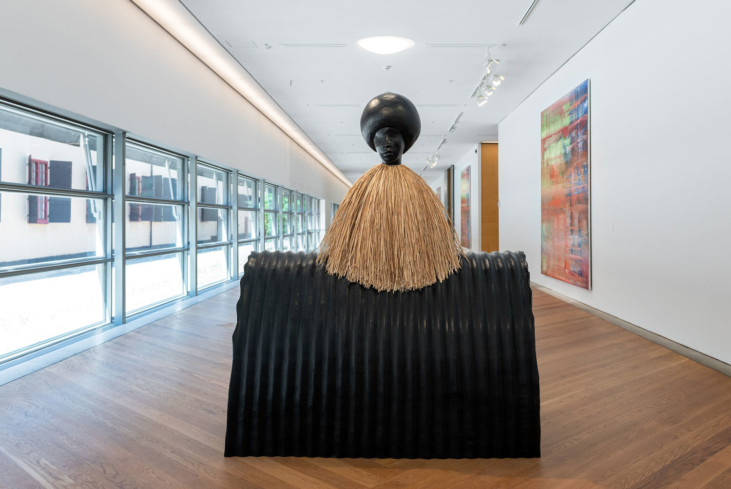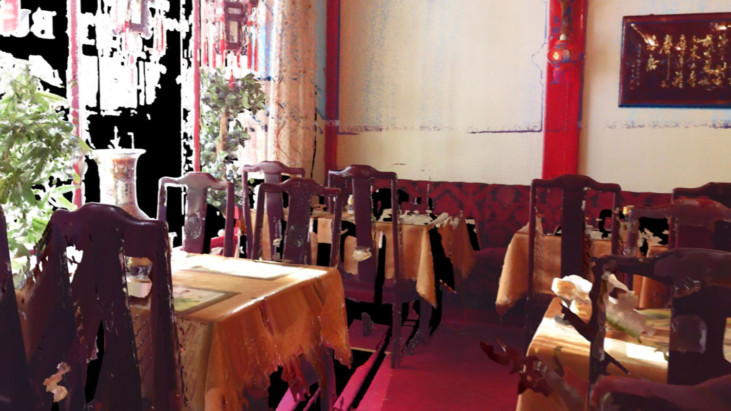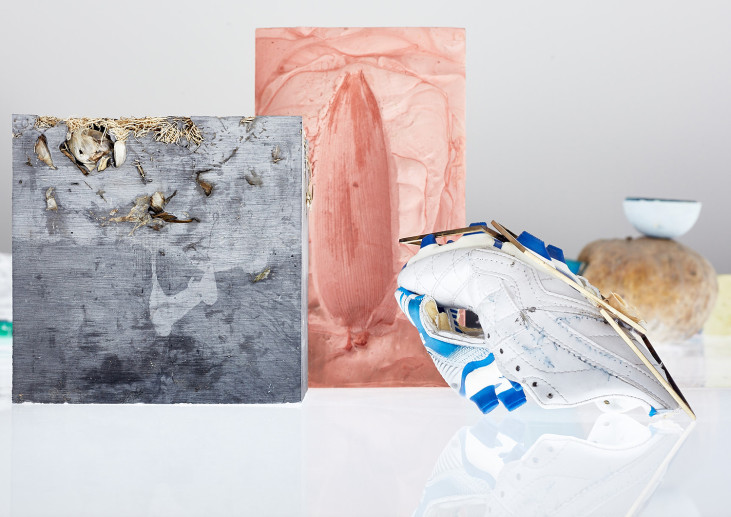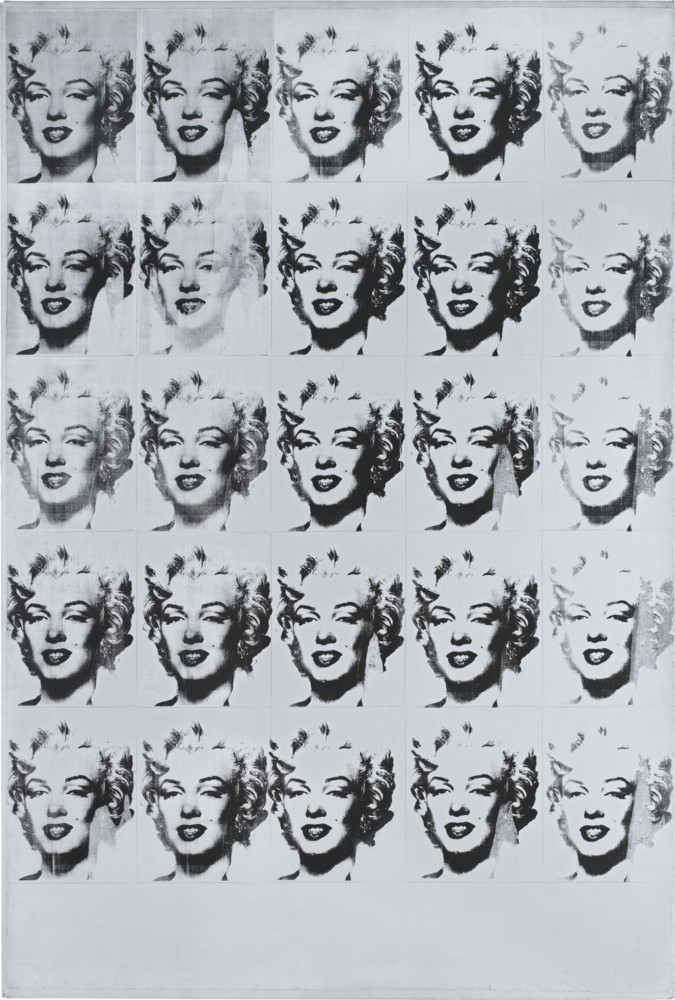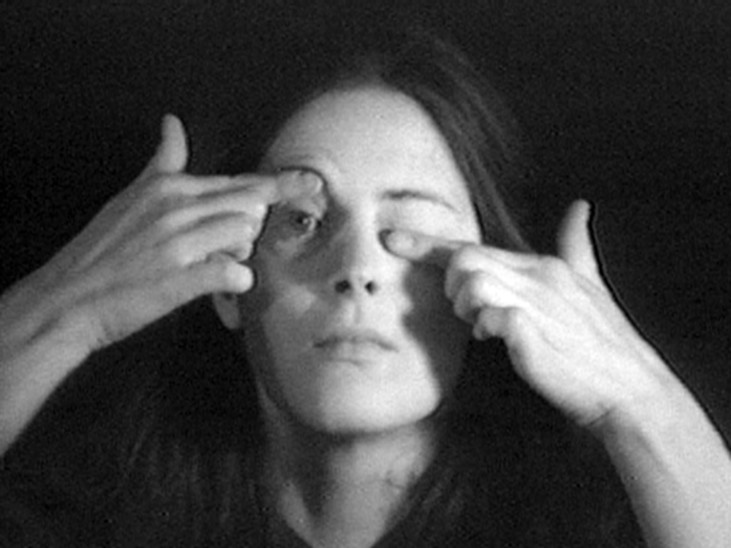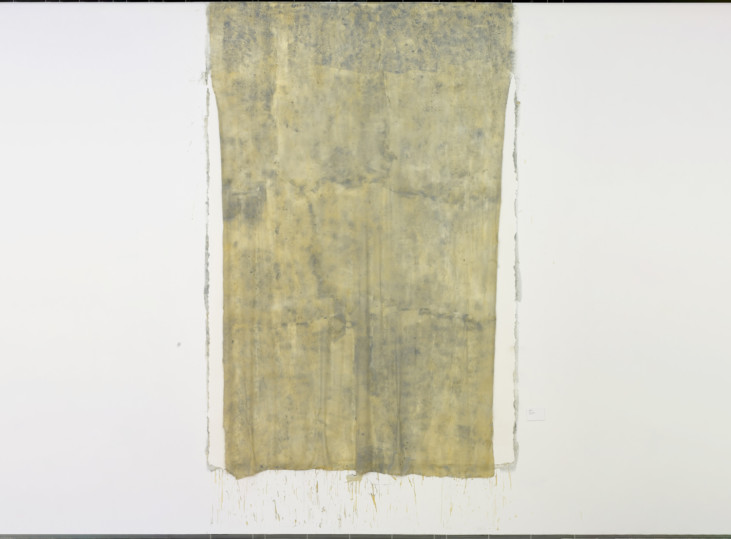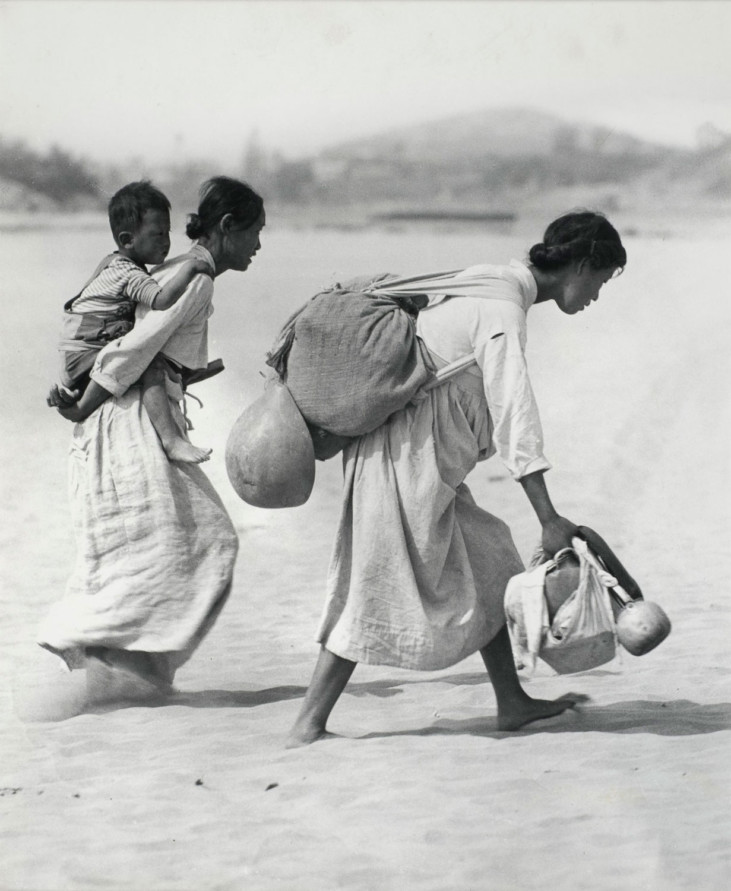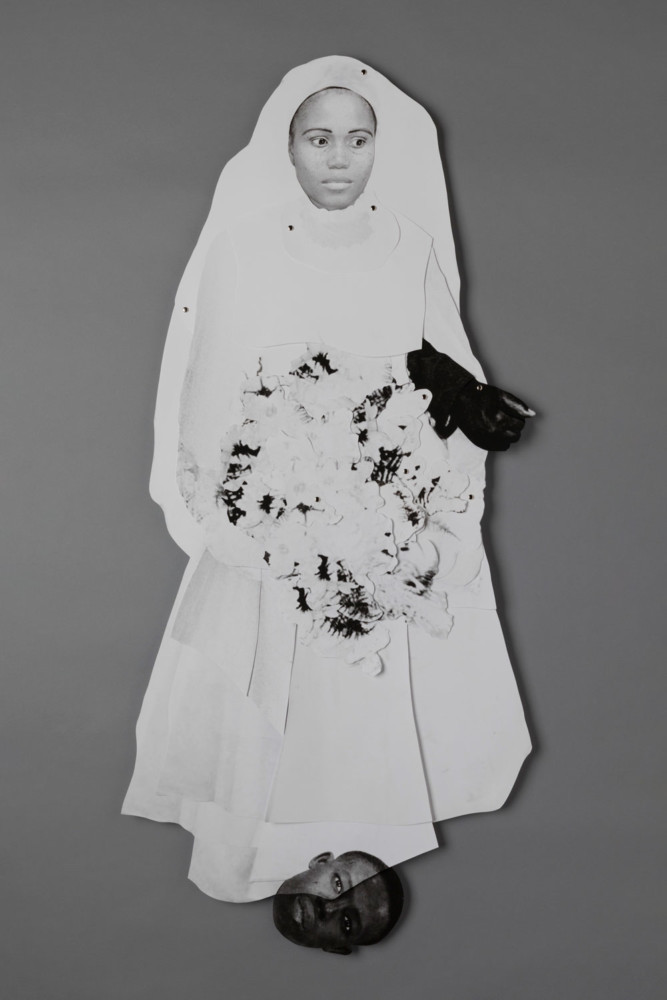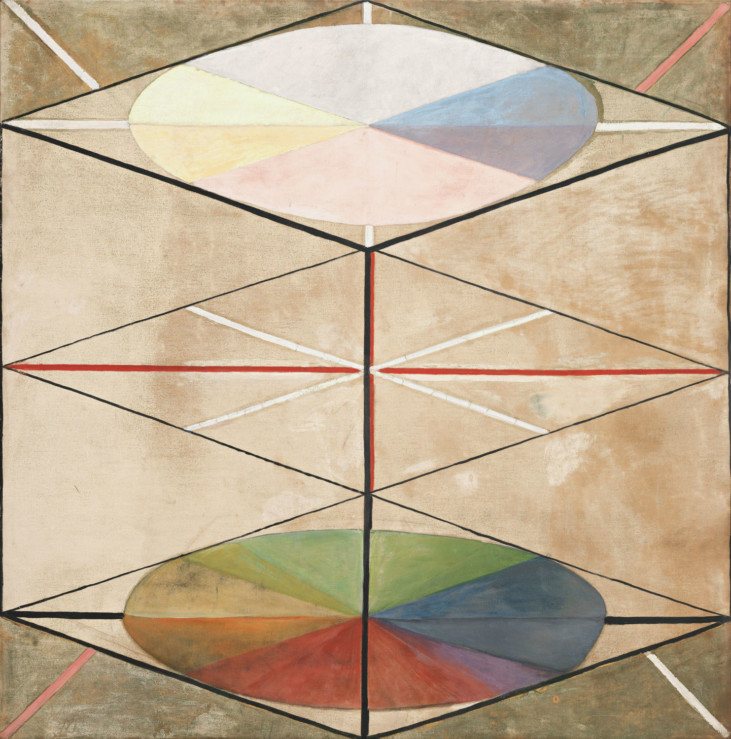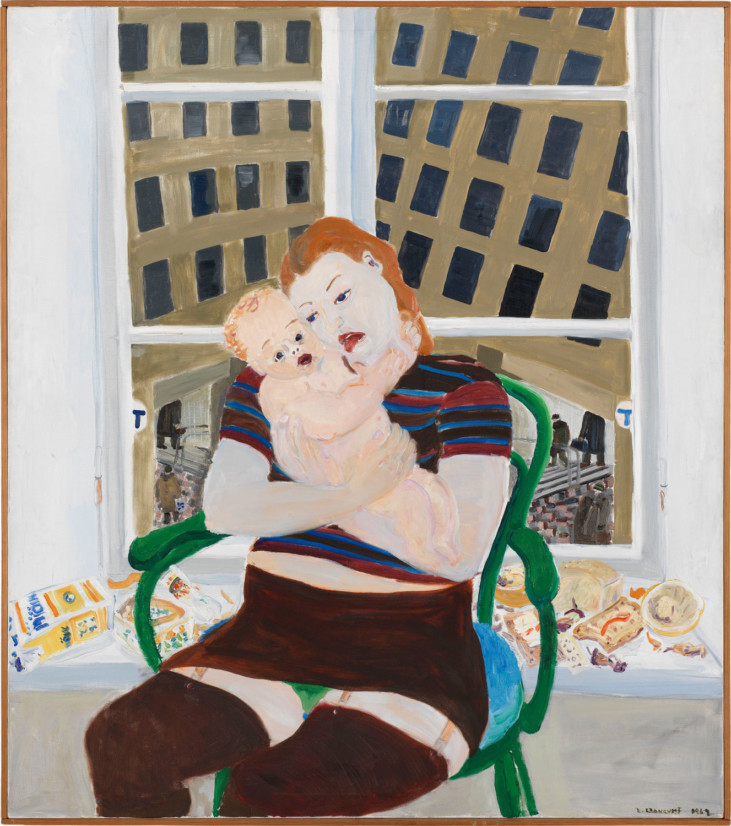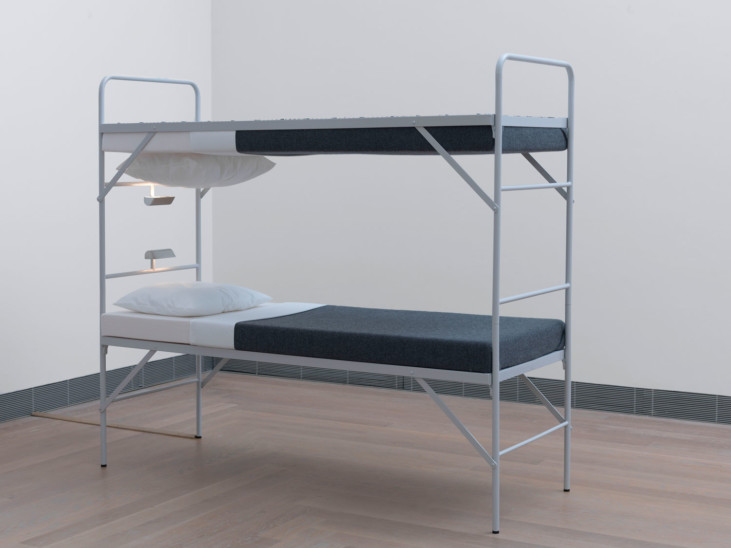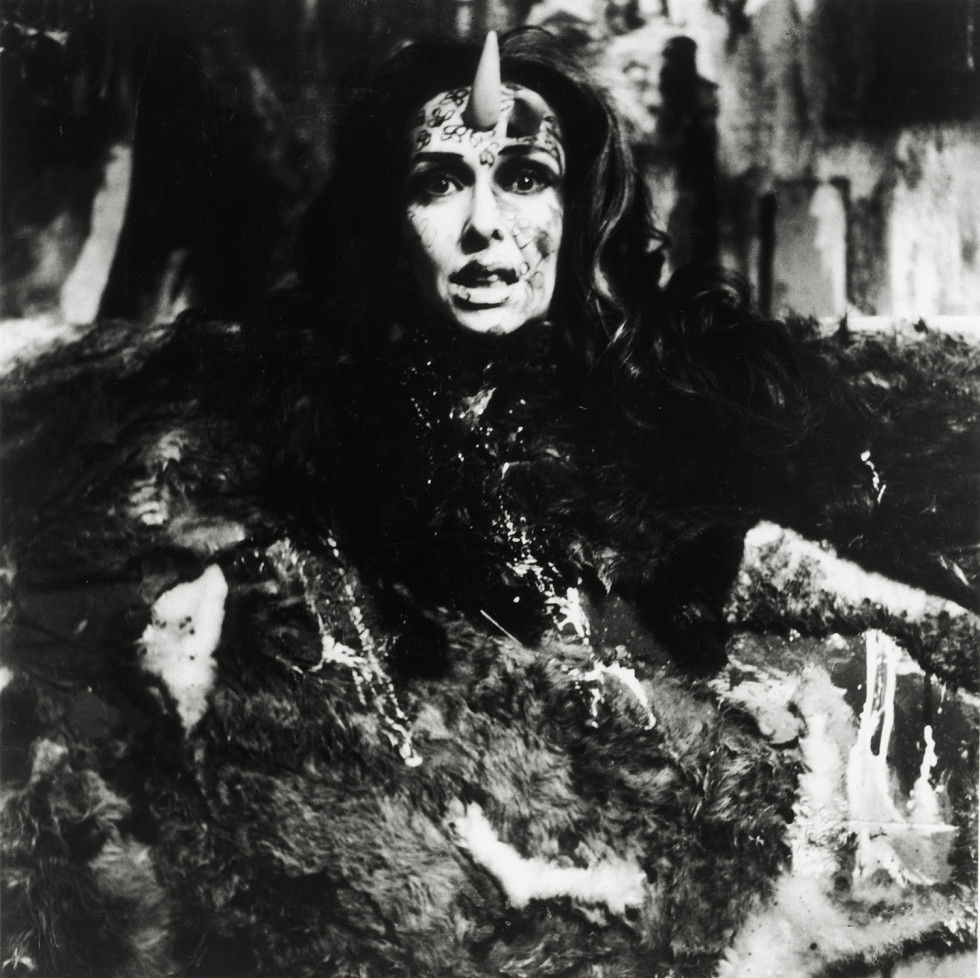
Carolee Schneemann, Eye Body # 20, 1963 Acquired with funds from the Second Museum of our Wishes, Moderna Museet. © Carolee Schneemann/ Bildupphovsrätt 2016
9.11 2010
The Second Museum of Our Wishes: Carolee Schneemann
In Eye Body: 36 Transformative Actions (1963), Schneemann is photographed in a sculpture which is both an assemblage and a moving work. Her naked body is painted and seems to be a part of the work.
Schneemann appears as both subject and object, artist and work:
I wanted my actual body to be one with the work, an integrated material – a further dimension of the construction … I am both image maker and image. The body has to be erotic, sexual, desirable, full of lust, but it is also sacrifi ced: it is marked, covered with brush strokes and expressions, an invention of my creative female will.
Schneemann’s most groundbreaking performance work evolved from her interest in painting as action. From the outset, the body was important for her, both as an artistic medium and as a subject. It also referred to a woman’s right to her own sexuality. Schneemann became a controversial fi gure, not only in conservative circles, but also among radical feminists. Her work was criticized for being too autobiographical, too focused on passionate desire, and too heterosexual…
Schneemann also placed great importance on rituals and religious experiences, in particular prehistoric cultures, rites and symbols. Her breakthrough came with a performance work entitled Meat Joy. It was fi rst presented in May 1964 at the Festival de la Libre Expression in Paris, then in London, and fi nally on three occasions in November 1964 at the Judson Memorial Church in New York City. The work was both a happening and a dance. Schneemann has described it as an erotic rite, with bodies, meat and fi sh as the material, accompanied by pop music, street sounds and spoken texts. It was alternately ecstatic, sensual, comical, disgusting and repulsive.
The performance work, Interior Scroll, was presented twice; the fi rst occasion was August 1975 at an exhibition entitled Woman Here & Now, East Hampton, Long Island. It was also performed in September 1977 as part of the Telluride Film Festival in Colorado. During the performance she pulled a paper scroll from her vagina at the same time as she read the text written on it. The text was an excerpt from a monologue from her fi lm Kitch’s Last Meal (1973–78).
The documentation of Interior Scroll consists of black and white photographs as well as the object – the scroll with text. Schneemann has described this performance as a meditation on “the architecture of the vagina.” Interpretations of the work have also stressed that the scroll goes through the artist’s body like fi lm through a projector and the spoken word replaces the projection of the image. An image of the birth of language.•
Carolee Schneemann born 1939, Fox Chase, Pennsylvania, USA
Read about The Second Museum of Our Wishes
Published 9 November 2010 · Updated 15 February 2016

